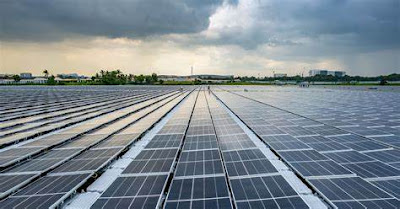THE ADVANCEMENTS AND POTENTNIAL OF ASIA'S FLOATING SOLAR FARMS
As the world seeks sustainable energy solutions, Asia has emerged as a key player in the renewable energy landscape. One innovative approach gaining traction in the region is the development of floating solar farms. These solar installations, situated on bodies of water such as lakes, reservoirs, and ponds, present a unique set of advantages and challenges. Let us delve into the fascinating world of Asia's floating solar farms, exploring their growth, benefits, and the technological advancements driving their adoption.
The Rise of Floating Solar Farms in Asia:
1. The Need for Alternative Spaces
- With land becoming a precious commodity in densely populated Asian countries, the utilization of water surfaces for solar installations becomes crucial.
- Floating solar farms address the challenge of finding suitable land for large-scale solar projects, offering a viable alternative to traditional ground-mounted systems.
2. Advantages of Floating Solar Farms
- Land Conservation: By utilizing water bodies, these solar farms help conserve valuable land that can be used for agriculture, housing, or other purposes.
- Reduced Water Evaporation: The shade created by the solar panels can reduce water evaporation, providing an additional environmental benefit, particularly in regions facing water scarcity.
- Increased Energy Efficiency: The cooling effect of water can enhance the efficiency of solar panels, leading to increased energy production compared to land-based installations.
Technological Innovations:
1. Floating Platforms
- Buoyancy Systems: Engineers have developed sophisticated buoyancy systems to keep the solar panels afloat, ensuring stability in varying water levels.
- Modular Designs: Floating solar platforms often feature modular designs, allowing for flexibility in size and configuration to suit different water bodies.
2. Environmental Considerations
- Ecological Impact Assessments: As the popularity of floating solar farms grows, there is an increasing emphasis on conducting thorough environmental impact assessments to ensure minimal disruption to aquatic ecosystems.
- Biodiversity Conservation: Some projects incorporate designs that promote biodiversity by providing habitats for fish and other aquatic species.
Case Studies
 |
| The 40 MW Floating Solar Plant, Huainan, China. Credit - weforum.org |
1. China's Baihetan Floating Solar Project
- One of the largest floating Solar farms in the world, situated on the Baihetan Reservoir.
- Expected to generate a significant amount of clean energy while conserving land and water resources.
 |
| Singapore's Tengeh Reservoir Floating Solar Plant, Credit - Data Center Dynamics |
- Aiming to offset carbon emissions and strengthen Singapore's commitment to sustainable energy.
- Highlights the adaptability of floating Solar technology in urban environments.
Challenges and Future Outlook
1. Technical Challenges
- Maintenance and cleaning of Panels in water environments pose unique challenges.
- Addressing issues related to corrosion and the longevity of floating solar installations.
2. Economic Viability
- While the costs of floating Solar have decreased, challenges remain in making these projects economically competitive with traditional solar farms.
3. Global Expansion
- The success of Asia's floating Saolar Farms is sparking interest worldwide, with countries in Europe and the Americas exploring similar projects.
Asia's floating Solar Farms represent a groundbreaking fusion of environmental sustainability and technological innovation. As the world continues to grapple with the urgent need for clean energy solutions, these floating solar installations offer a promising path forward. The ongoing advancements in technology, coupled with lessons learned from existing projects, position Asia at the forefront of the global transition towards a more sustainable and energy-efficient future.
